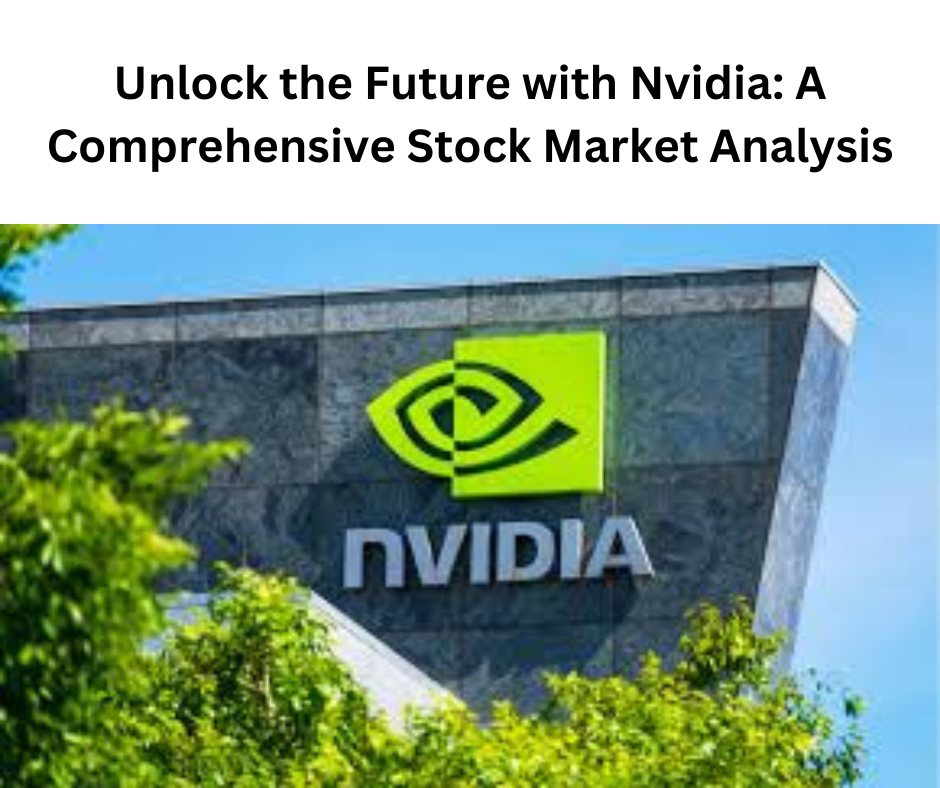Nvidia: A Comprehensive Overview and Stock Market Analysis
Nvidia Corporation, a leading player in the technology sector, has carved a niche for itself with groundbreaking innovations and robust financial performance. This blog provides an in-depth overview of Nvidia, its market presence, technological advancements, and a detailed analysis of its stock performance.
Introduction to Nvidia
Founded in 1993 by Jensen Huang, Chris Malachowsky, and Curtis Priem, Nvidia Corporation is an American multinational technology company headquartered in Santa Clara, California. Initially focused on graphics processing units (GPUs) for gaming and professional markets, Nvidia has expanded its reach into the artificial intelligence (AI), data centre, and automotive markets, making it a pivotal player in the tech industry.
Technological Advancements and Innovations
Nvidia’s primary product line includes GPUs, which are essential for rendering graphics in gaming and professional applications. The company revolutionized the gaming industry with its GeForce series, known for delivering high-performance graphics processing capabilities.
In recent years, Nvidia has ventured into AI and deep learning, areas where GPUs are also highly effective. The company’s AI platform, powered by its CUDA parallel computing architecture, has become integral in sectors ranging from healthcare to autonomous vehicles. Nvidia’s AI technology enables faster processing of complex data, making it indispensable in modern applications like natural language processing, image recognition, and predictive analytics.
Market Presence and Expansion
Nvidia’s strategic acquisitions have played a crucial role in its market expansion. Notable acquisitions include Mellanox Technologies, which enhanced Nvidia’s data centre offerings, and ARM Holdings, a move aimed at broadening its reach in the mobile computing and IoT markets. These acquisitions have not only diversified Nvidia’s portfolio but also fortified its position in the semiconductor industry.
Financial Performance
Nvidia’s financial performance has been remarkable, reflecting its strong market position and continuous innovation. Over the past decade, the company has demonstrated consistent revenue growth, driven by its expanding product lines and market demand.
For the fiscal year 2023, Nvidia reported a revenue of $26.91 billion, a significant increase from the previous year. This growth was primarily driven by its gaming and data centre segments, which contributed $12.46 billion and $10.61 billion, respectively. Nvidia’s net income for the same period was $9.75 billion, showcasing a robust profit margin.
Stock Market Analysis
Historical Performance
Nvidia’s stock has been one of the top performers in the tech sector. Over the past five years, NVDA (Nvidia’s ticker symbol) has delivered substantial returns to investors. The stock price has surged from approximately $25 in 2016 to over $700 in 2021 (adjusted for stock splits), highlighting investor confidence in Nvidia’s growth prospects.
Recent Trends
In the past year, Nvidia’s stock has experienced volatility, largely influenced by macroeconomic factors and industry-specific developments. The semiconductor shortage, driven by increased demand and supply chain disruptions, has impacted Nvidia’s production capabilities. Despite these challenges, Nvidia’s strategic positioning and strong demand for its products have helped maintain its stock performance.
Key Metrics
- Price-to-Earnings (P/E) Ratio: Nvidia’s P/E ratio is higher than the industry average, reflecting its growth potential and strong earnings. As of the latest reports, Nvidia’s P/E ratio stands at around 60, indicating that investors are willing to pay a premium for its future earnings.
- Earnings Per Share (EPS): Nvidia’s EPS has shown a steady increase, with the latest figure at $3.85. This growth in EPS is indicative of Nvidia’s ability to generate higher profits per share of stock, a positive sign for investors.
- Market Capitalization: Nvidia’s market capitalization has surpassed $500 billion, placing it among the most valuable technology companies globally. This substantial market cap reflects Nvidia’s dominant position in the GPU market and its expanding influence in AI and data centres.
Future Outlook
Nvidia’s future looks promising, driven by its continuous innovation and expansion into new markets. The demand for AI and machine learning applications is expected to grow exponentially, providing a significant growth avenue for Nvidia. Additionally, the company’s entry into the automotive sector, with its AI-powered autonomous driving solutions, presents another substantial growth opportunity.
However, investors should be mindful of potential risks. The semiconductor industry is highly competitive, and competitors’ technological advancements could impact Nvidia’s market share. Moreover, geopolitical tensions and trade restrictions could pose challenges to Nvidia’s supply chain and market access.
Conclusion
Nvidia Corporation is a testament to the power of innovation and strategic market expansion. From its inception as a GPU manufacturer to its current status as a leader in AI and data centres, Nvidia has consistently delivered value to its stakeholders. While the stock market presents inherent risks, Nvidia’s robust financial performance and future growth prospects make it a compelling choice for investors seeking exposure to the technology sector.
Investors should research and consider their risk tolerance before making investment decisions. Nvidia’s journey is a clear indication of how technological advancements and strategic foresight can drive sustained growth and market leadership.







